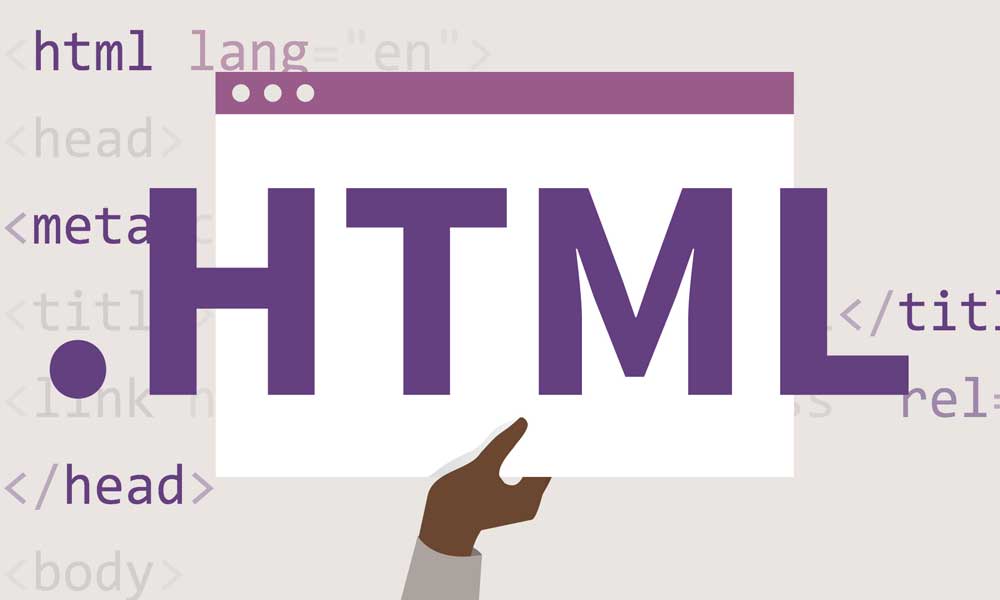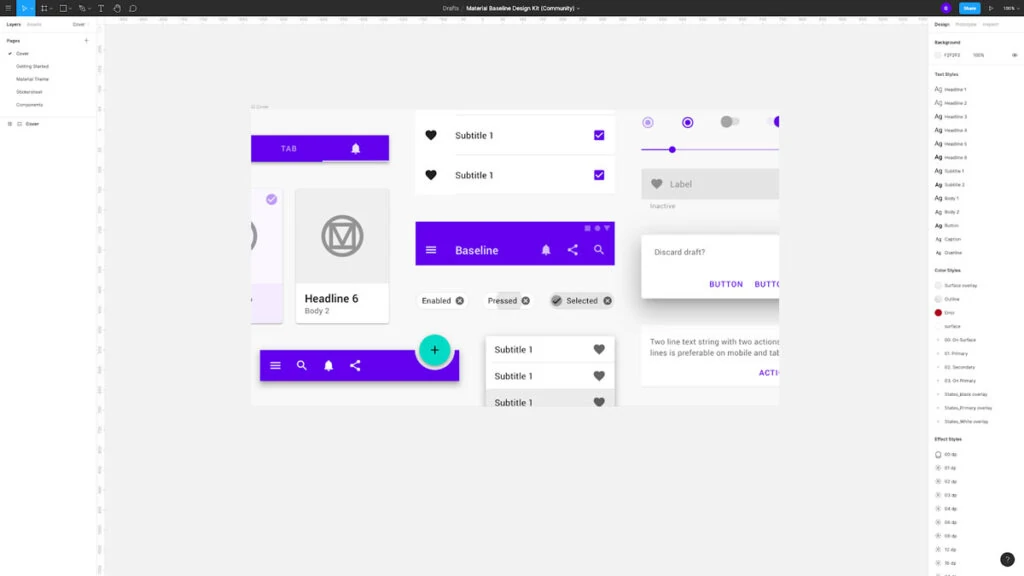20+ Essential Skills for a Web Design Career
A web design career enables you to blend technology and creativity to build practical and aesthetically pleasing digital experiences. As a web designer, you get to bring ideas to life online. But it takes more than an artistic flair and love for the web to succeed in this field. It would be best if you had a diverse and specialised skillset.
This guide covers the essential skills any aspiring or established web designer needs to thrive. We'll explore the hard and soft abilities critical for a web design career. Let's dive in.
Table of Contents
Technical Skills

Web design sits at the intersection of art and technology. So it would help if you had competency in both spheres. Here are some of the critical technical skills:
HTML & CSS
HTML and CSS form the foundation of web development. HTML provides the structure and semantics for web content. CSS brings styles like colours, fonts, and layouts.
As a web designer, you need extensive knowledge of HTML and CSS. It's impossible to build websites without proficiency in these fundamental languages. Know how to:
- Write semantic HTML markup.
- Implement responsive design with CSS media queries.
- Position elements using CSS flexbox and grid.
- Style sites using CSS frameworks like Bootstrap.
- Optimise HTML and CSS for performance.
Aim to write clean, valid and optimised code.
JavaScript
While not strictly required, having JavaScript skills expands your abilities as a web designer. JavaScript powers interactive elements on websites. With JavaScript, you can:
- Build drop-down menus, accordions and other UI components.
- Add dynamic behaviour without page reloads.
- Manipulate DOM elements.
- Connect to APIs and display data.
- Track user interactions for analytics.
Start with core language features like variables, functions, arrays, objects and events. Then, explore DOM manipulation and libraries like jQuery.
- It can be a gift option
- Comes with secure packaging
- It is made up of premium quality material.
- Haverbeke, Marijn (Author)
- English (Publication Language)
Web Design Tools
Tools streamline and enhance the web design process. Proficiency in crucial tools is vital.
For creating wireframes and prototypes, learn applications like Sketch, Figma, Adobe XD or InVision Studio.
To design and develop sites, master Adobe creative tools like Photoshop, Illustrator and Dreamweaver. Also useful are collaboration platforms like InVision and Zeplin.
For version control, use Git and platforms like GitHub or Bitbucket. Useful utilities include Chrome DevTools, SVG editors, compression tools and more.
Stay updated on emerging tools. Identify ones that boost your productivity and integrate them into your workflow.
Accessibility
Accessible design enables people with disabilities to perceive, understand, navigate and interact with websites. With adherence to standards like WCAG 2.1, you can create accessible sites.
Learn techniques like:
- Writing semantic HTML with ARIA roles for screen readers.
- Adding captions and transcripts for video/audio.
- Ensuring appropriate contrast ratios for text legibility.
- Making elements keyboard and screen reader accessible.
- Designing responsively for various devices and abilities.
Building fundamentals of accessible design early in your career is prudent.
Web Design Best Practices
Follow industry best practices to create high-quality designs:
- Responsive design – Make sites work fluidly on all devices using media queries, variable fonts, SVG, flexbox/grid and relative units.
- Mobile-first – Design for mobile before enhancing for larger screens. Load the fastest possible experience for mobiles.
- Progressive enhancement – Layer in effects using JS and CSS without breaking core functionality.
- Performance optimisation – Minify code, lazy load images, use efficient CSS selectors, remove unused code and more.
- Valid code – Write standards-compliant HTML and CSS for greater accessibility, SEO and performance.
- Testing – Rigorously test across browsers and devices to identify bugs. Conduct user testing to improve UX.
- Version control – Use Git for managing code changes and enabling collaboration.
Staying up-to-date on emerging best practices demonstrates your commitment to excellence.
Web Design Process
Successfully executing the web design process involves multiple micro-skills:
- Project management – Scope projects, estimate timelines, prioritise tasks, and mitigate risks.
- Research – Conduct user research, analyse site metrics/funnels, and run competitor analysis.
- Information architecture – Plan site structure and navigate flows based on user needs.
- Wireframing – Sketch page layouts, interface elements and interactions.
- Prototyping – Build interactive prototypes to demo ideas and test usability.
- Visual design – Apply colour theory, typography, and layout principles to refine sites aesthetically.
- Testing and refinement – Rectify issues through usability testing and A/B testing.
- Performance monitoring – Track KPIs to monitor effectiveness post-launch.
Sharpening your skills in these sub-processes will enable you to execute web design projects systematically.
Typesetting

Type is central in web design. Master typographic principles like:
- Type anatomy – serifs, stems, aperture and so on.
- Type classifications – serif, sans-serif, monospace, handwritten etc.
- Pairing fonts – complementary or contrasting.
- Typographic hierarchy – establish visual priority and rhythm.
- Readability – line lengths, spacing, and contrast for easy reading.
- Page composition – headlines, subheads, captions, body text.
Understand web typographic features like @font-face, font loading, fallback fonts, and font styling with CSS.
Design Systems
Design systems bring consistency in branding and UI. They contain rules for visual style, components and patterns.
Familiarity with:
- Colour palettes – primary and secondary colours, shades and tints.
- Typography – font stacks, sizes, colours, line heights and spacing.
- UI patterns – layouts, navigation, buttons, inputs, messaging, etc.
- Iconography – symbolic visual language.
- Imagery – cohesive image styles and usage principles.
- Tone and voice – brand-specific communication style.
The ability to extend and maintain design systems is sought after.
Creativity
Web design marries technology with creativity. Nurture your creative skills by:
- Brainstorming ideas without self-judgment.
- Finding inspiration from diverse sources – nature, art, music, etc.
- Improving visual literacy by studying aesthetics and composition.
- Sketching and doodling concepts.
- Fostering idea incubation through activities like walking, showering, etc.
- Collaborating with others to spawn new ideas.
- Making incremental improvements to refine ideas.
- Overcoming creative blocks by shifting focus.
Regular creative practice expands your imagination and problem-solving abilities.
- Judkins, Rod (Author)
- English (Publication Language)
- 208 Pages – 03/15/2016 (Publication Date) – TarcherPerigee (Publisher)
Visual Design Theory
Visual design theory provides guiding principles for aesthetically pleasing designs. Master concepts like:
- Colour – meanings, triadic harmony, shades, contrast.
- Composition – symmetry, rule of thirds, golden ratio, balance.
- Typography – fonts, hierarchy, readability.
- Gestalt laws – similarity, closure, proximity.
- Branding – identity, emotion, consistency.
- Visual hierarchy – direct eye flow, focus.
- Minimalism – reduce clutter and highlight important.
Apply theory judiciously combined with creative intuition.
UI/UX Design

User experience design shapes the overall website functionality and interactions. The user interface determines specific component behaviours.
Gain skills in:
- User flows – plan optimal paths.
- Wireframing – blueprint layout and info architecture.
- Prototyping – demonstrate interactivity.
- Usability – simplify tasks and minimise cognitive load.
- Accessibility – accommodate disabilities.
- Interaction design – enable intuitive interactions.
- Information architecture – structure, label, and navigate content.
- Interface design – combines visuals, content, and space effectively.
Solid UI/UX skills make you a well-rounded web designer.
Design Process
Follow a structured design process:
- Requirements gathering: understand goals, target users, and use cases.
- Research: gather insights from analytics, user testing, surveys, etc.
- Site mapping: outline site structure and hierarchy.
- Wireframing: sketch page layouts and interfaces.
- Prototyping: simulate interactivity, transitions, and micro-interactions.
- Visual mockups: apply branding, graphics, and styles.
- Usability testing: identify issues and improvement areas.
- Iterative refinement: refine repeatedly based on feedback.
This systematic approach results in effective designs optimised for users.
Communication Skills
Communication skills enable you to collaborate effectively:
- Active listening – Grasp stakeholders' needs through active listening.
- Empathy – See from users' perspectives via empathy.
- Meeting facilitation – Drive discussions and brainstorming.
- Giving feedback – Critique designs constructively.
- Writing – Convey ideas clearly in specs, briefs, and emails.
- Presenting – Explain concepts compellingly.
- Visual communication – Designs, wireframes and prototypes communicate too.
Strong communication makes you better at eliciting requirements, explaining your work and collaborating.
Interpersonal Skills
Design is a collaborative discipline requiring solid interpersonal skills:
- Teamwork – Cooperate with designers, developers and stakeholders.
- Flexibility – Adjust to changing priorities and feedback.
- Patience – See projects through multiple iterations.
- Reliability – Deliver work on time, meeting expected quality levels.
- Attentiveness – Notice small yet essential details.
- Curiosity – Ask questions to understand needs deeply.
- Friendliness – Forge connections and build trust.
- Confidence – Present and explain your work convincingly.
Cultivating these makes you more valued as a team member.
Time Management
Balancing multiple projects demands stellar time management:
- Prioritisation – Rank tasks based on urgency and impact.
- Scheduling – Realistically estimate the time required for each job.
- Organisation – Sequence tasks thoughtfully in schedules and checklists.
- Focus – Minimise distractions by shutting off notifications during heads-down work.
- Progress tracking – Stick to timelines and monitor progress.
- Iteration – Build in buffer time for refinement.
- Work-life balance – Set boundaries and avoid burnout.
With excellent time management, you can maintain momentum across projects.
Design Tools

Be skilled in essential design tools:
- Wireframing – Figma, Sketch, Adobe XD
- Prototyping – InVision, Principle, Framer, Origami
- Graphic design – Adobe Photoshop, Illustrator
- Version control – Git, Bitbucket, GitHub
- Collaboration – InVision, Abstract, Zeplin
- Project management – Asana, Trello, Jira
- Brainstorming – Miro, Mural, Whimsical
- Design systems – Storybook, Zeroheight
Choose tools aligned with your preferences and your team's tech stack.
Leadership Skills
Senior designers exhibit leadership abilities:
- Vision – Set strategic direction based on customer needs.
- Execution – Plan, coordinate and execute projects effectively.
- Mentoring – Coach and inspire colleagues by example.
- Advocacy – Promote design's value persuasively to stakeholders.
- Technology expertise – Provide technical guidance on feasibility.
- Business acumen – Grasp company goals and help achieve them.
- Influence – Shape consensus using insights, empathy and logic.
Lead initiatives to create customer-centric products and elevate design maturity.
- Sinek, Simon (Author)
- English (Publication Language)
- 368 Pages – 05/23/2017 (Publication Date) – Portfolio (Publisher)
Software Skills
Expand your potential by learning adjacent software skills:
- CMS platforms – WordPress, Drupal, Joomla
- Ecommerce platforms – Shopify, WooCommerce, Magento
- Frontend frameworks – React, Angular, Vue.js
- Back-end languages – Node.js, Python, PHP, .Net
- Content management – Contentful, Prismic, Sanity
- Marketing automation – HubSpot, Mailchimp
- Email creation – Mailchimp, Campaign Monitor
- SEO – Yoast SEO, Moz Pro
- Analytics – Google Analytics, Matomo
Broadening technical abilities boosts career prospects.
Business Skills
Grasping business context helps you design strategically:
- Brand strategy – How does the brand differentiate itself? What emotions does it evoke?
- Marketing – What channels acquire and retain customers cost-effectively?
- Sales funnel – How do prospects move through awareness, consideration and decision stages?
- User psychology – What motivates users? What causes friction?
- Data analytics – Which metrics indicate performance? How to AB test improvements?
- Return on investment – How does design contribute towards company goals like revenue and customer loyalty?
Business literacy makes you impactful.
Career Skills

Beyond the concrete technical and soft skills, you need broader abilities to sustain a thriving long-term career.
Continuous Learning
Web design evolves quickly. Maintain your edge through:
- Online courses – Refresh existing skills and learn emerging ones.
- Reading blogs and books – Immerse in industry wisdom and innovations.
- Meetups and events – Connect with the community.
- Side projects – Experiment freely.
- Courses and certifications – Work towards accreditations to validate abilities.
- Practice and self-reflection – Identify areas for growth. Seek challenges.
Make learning a lifelong habit.
Adaptability
Ready yourself to keep pace with change via:
- Curiosity – Eagerly explore new technologies.
- Flexibility – Pivot to new tools and techniques quickly.
- Focus on fundamentals – Core skills like HTML/CSS withstand fluctuations.
- Transferable skills – Creativity, communication and problem-solving thrive everywhere.
- Growth mindset – Believe abilities can be developed through effort.
- Embracing uncertainty – Find excitement in the unknown.
With adaptability, you surf change instead of being swept away by it.
Specialisation
Gain expertise in specific domains like:
- Branding and visual design
- Interaction design and user experience
- Frontend development
- Design systems
- Digital Marketing
- Ecommerce design
- Accessible web design
- Animation and motion graphics
Specialising makes your skills differentiated and profound.
Networking
Build meaningful connections by:
- Attending conferences and meetups
- Participating in online communities
- Creating content and sharing knowledge
- Volunteering for industry initiatives
- Taking on speaking opportunities
- Mentoring others
- Following prominent practitioners
Relationships broaden perspectives and uncover growth opportunities.
Conclusion
This guide only scratches the surface of the multi-faceted expertise needed for web design. Treat skills development as a lifelong endeavour. Be a perpetual student. Build both deep craftsmanship and broad business sense. Hone the human dimension of design through empathy and communication skills. With dedication and passion, you can build a stellar web design career that stands the test of time.
Web Design Career FAQs
What are the most essential skills for a web designer?
The most critical skills are HTML, CSS, design software proficiency, creativity, communication and problem-solving. A solid grasp of user experience principles and web best practices is also vital.
What skills can make a web designer more marketable?
In-demand skills that improve marketability include JavaScript, responsive and accessible design, CSS frameworks like Bootstrap, CMS platforms like WordPress, collaboration tools, and business acumen.
How can a web designer gain new skills?
Learning options are online courses, boot camps, books/blogs, practising with side projects, participating in open source projects, earning certifications, attending meetups/events and learning directly on the job.
Should web designers learn to code?
Learning at least HTML and CSS is mandatory for web designers. JavaScript is recommended, too. Full-stack developer skills are not strictly necessary but are a plus. The optimal path is being skilled in design-centric coding for the front end.
What soft skills does a web designer need most?
Vital soft skills are creativity, visual communication, collaboration, interpersonal abilities, time management, adaptability to change, empathy, verbal communication and business understanding.
Last update on 2024-04-30 / Affiliate links / Images from Amazon Product Advertising API



